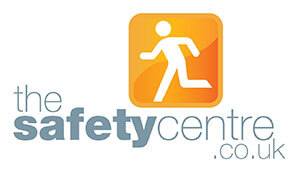Fire Safety
Fire Safety ?
It is becoming more and more important for people to take positive steps towards fire safety. There is an ever increasing amount of high profile incidents involving fire safety, which bring the issue of fire safety to the forefront of people's minds.
Fire Safety within the workplace is very important. It is imperitive that people responsible for the building make sure that adequate measures for fire safety are put in place. The responsibilities include the following:-
- Adequate types & numbers of fire extinguishers
- An automatic or manual only fire alarm system
- Fire sprinkler system
- Emergency lighting systems
- Safety Signage
- Emergency exit door furniture
- Door Closers
- Fire Door Seals
- Fire Doors
- Fire Stopping
- Passive Fire Protection
- Auto-Diallers
- Fire Risk Assessments
The Regulatory Reform Order 2005
Under the new RRO (Regulatory Reform Order) it is now the responsibility of the end user of the building to ensure that adequate fire safety measures are put in place. This includes carrying out fire risk assessments to identify areas of risk that need to be addressed. In recent times people have been prosecuted for not carrying out their responsibilities as laid out by the Regulatory Reform Order.
A Short Guide to the Regulatory Reform Order can be found by clicking on this link - Regulatory Reform Order
This order applies to virtually all types of premises, examples of these are:-
- Offices & Shops
- Hospitals & Carehomes
- Community Halls, Places of Worship
- The shared areas of properties several households live in (HMO's)
- Pubs, Clubs and Resaurants
- School, Colleges and Universities
- Sports Centres
- Tents & Marquees
- Hotels, B&B's and Hostels
- Factories and Warehouses
Buildings which the order does not apply to are peoples private homes, including individual flats in a block or house.
The main rules which the RRO outlines are:-
- To carry out a fire risk assessment of the property to identify any possible dangers or risks.
- Condider within the building who may especially be at risk.
- Get rid of or reduce the risk from fire as far as is reasonably possible and provide general fire precautions to deal with any possible risk left.
- Take further steps to ensure that there is protection if flammable and / or explosive materials are used or stored.
- Create a plan to deal with any emergencies and, in most cases, keep a record of your findings.
- Review any findings made when neccessary.
Under the order the people tasked with meeting the order and fire safety are employers for any parts of a building that the employees may go to, the managing agent or proprietor of shared parts of buildings or shared fire safety equipment, such as fire alarm systems, fire sprinkler systems, the occupier such as self-employed people, voluntary organisations and any other person who has control of all or some parts of a premises.
For More Information On Fire Safety Please Click The Following Link:- Fire Safety






